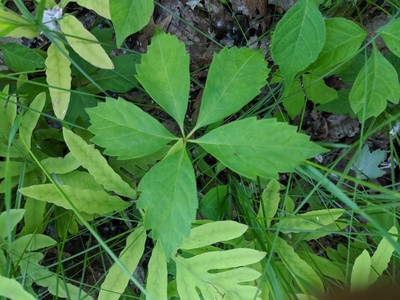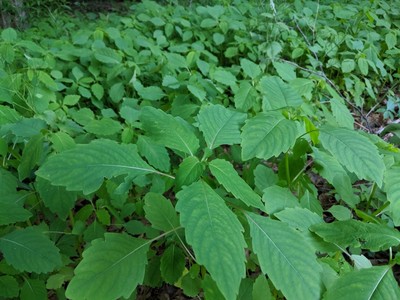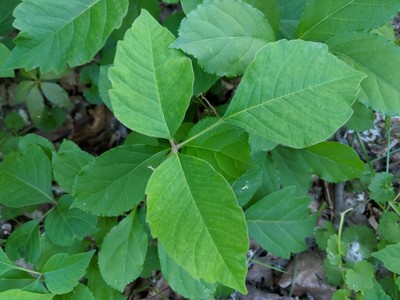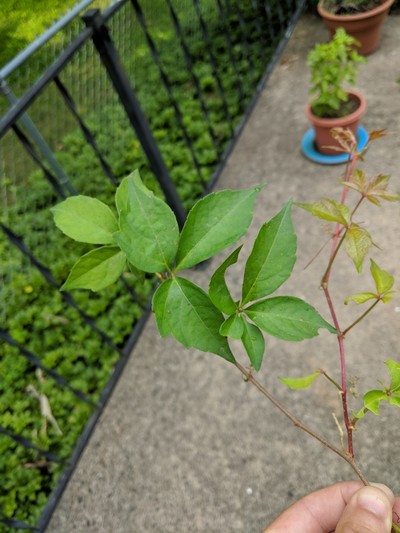Poison ivy is everywhere, and sometimes brushing up against it can't be avoided. But there are steps you can take to avoid getting an itchy rash ever again.
Step 1. Get a poison ivy rash. And I don't mean a little "I rubbed a leaf on my arm" experimental rash. I mean a full blown, all over your body rash that lasts for months. I'm talking the kind of rash that comes about when you are by the lake getting ready to go for a swim, you strip down to your underpants while sitting in a big poison ivy patch, then swim around in the water until the poison ivy oil spreads all over your body. On day one you'll find a mosquito bite on your arm and think to yourself, "I don't recall getting a bug bite there". On day two a little bumpy rash forms which looks nothing like any bug bite, it looks more like a little red bump that's been copied and pasted repeatedly in weird patterns and lines on your skin as though a blind alien gave you a big braille tattoo. It doesn't really itch at first. But then you can't help yourself but give it a light scratch, it looks like it could use it. It's not unpleasant. It feels good to scratch it so you keep doing it. And it feels even better. And better. AND BETTER. By day three you're spending hours of the day hiding away experiencing the guilty pleasure of scratching away at your skin with any object within reach.
A week passes, and the rash has spread. It's on your arm and up and down your legs. You've done a little research on the internet and you are now armed with some comforting information. Poison ivy isn't contagious so once the oil has been washed off it won't spread by itching it. There are certain places poison ivy can't affect such as the bottoms of the feet and the palms of your hands. The rash doesn't last long, maybe a week or two. It should all be over soon. You wake up on the morning of day eight excitedly expecting to see the rash begin to decline. Instead you find something you did not expect: perfectly drawn lines of rash dots following the veins on your arms and legs. What does that mean? A little googling reveals that if you get the oil gets into your bloodstream, then the rash will show up on your skin along veins. How did that happen!?! On every day for the next week you think to yourself, "this can only get better" and yet every morning it only gets worse. Next it's covering your hands and feet. Now instead of bumps it's big disgusting pus-filled blisters. Then it's in between the toes. By now you've done your research and know that if the poison ivy oil is still on your shoes and clothes, it will continue to infect your skin. You start washing all the clothes you've worn since the rash started. Not just in the washer, but aggressively hand washing them in the sink. You wash all the shoes you've worn, scrubbing them with soap and water. Another week passes. The blisters have turned into big clear liquid-filled skin balloons. Instead of getting better the rash just. keeps. spreading. It's three weeks in and by now you're losing your grip. You've washed everything in the house, but now you wonder, is the oil in my car? On the steering wheel? On the seat? Doorknobs in the house? Has it infected the washing machine? Is it at work? You start obsessively scrubbing everything you might have ever touched. By day 30 poison ivy fatigue has set in. You've given up on life. That's when the poison ivy starts breaking it's own rules. You wake up optimistic, but instead of an improvement, you find a new rash on that thick layer of tough skin on the bottoms of your feet. They said it couldn't happen. Surely this is rock bottom. And yet the next morning, you find a new rash inside a place I can't mention here, but trust me when I say it's worse than the bottoms of the feet.
Step 2. Now that you have gotten the rash and are properly motivated, you will have an easy time of learning to identify poison ivy. Three leaves, kinda glove-like, and the middle leaf is different from the outer two in that it has a bit of a stem. It is a shape-shifter. Sometimes it is plain green like every other leaf in the woods. Other times it is it's own unique color of green that you can see from a mile away. It can be freakishly bright red at times. It can be shiny or matte. It can grow as a single three-leafed plant, a ground-creeping vine, or a giant thick hairy vine that grows up the sides of trees anywhere from a millimeter to several inches in diameter. Heck it can even grow as a giant bush. Once you learn to recognize it, you can see that it's many many places. It grows anywhere but not everywhere. You start to recognize the signs. You might not see poison ivy but you know it's there. If you see the five-leaved virginia creeper, there's a very good chance poison ivy is also growing in the area.

If you're not already a poison ivy expert, go and take the poison ivy quiz. It will give you a stronger sense of what poison ivy looks like in its many different forms. Also study how to identify poison ivy. The key is to not stop there. Go out and explore. Find poison ivy growing in your neighborhood. Once you discover poison ivy on your own, it will immediately become second nature and you will see it everywhere. Identification is the only way to protect yourself.
An absolute miracle of poison ivy is the fact that poison ivy's antidote is *always* growing near poison ivy. The antidote is called jewelweed. This is a great little plant that frequently takes over large areas of the forest floor. These are also known as touch-me-not's because the flower develops a seed pod with tremendous stored potential energy. When you touch the seed pod, it pops shooting seeds in all directions. The seeds are actually edible if you can find them after the explosion. The old wives say that the sap in the stems of jewelweed can be rubbed on the skin prevent getting a rash. It can be rubbed on before encountering poison ivy or after. It all sounds too good to be true but I swear by it. It happened just last week. I had no choice but to run through poison ivy. So I grabbed some nearby jewelweed, crushed up some stems, and rubbed it on the affected areas of my feet and legs. The sap is wonderfully cooling soothing on the skin. And despite having come in direct contact with poison ivy, I did not develop any rash whatsoever. Can I prove the jewelweed worked? No. But I'm definitely a believer.



